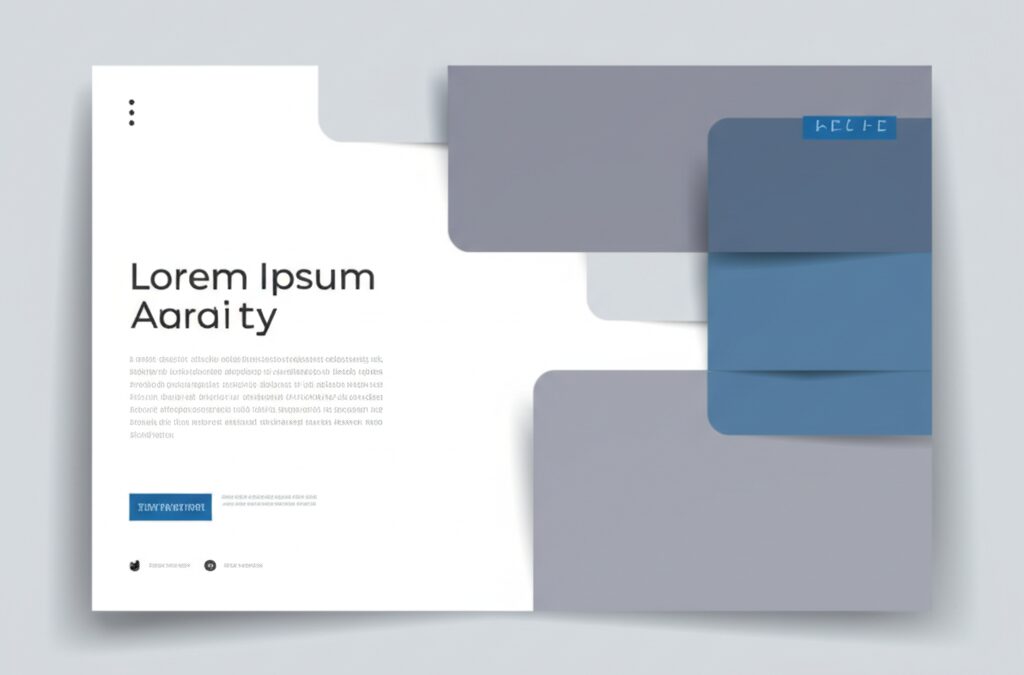
Overview
Let’s face it: sales often gets a bad rap. The word itself might conjure up images of pushy tactics, relentless follow-ups, or that awkward moment when someone’s trying to sell you something you don’t even want. But here’s the truth—sales doesn’t have to feel like you’re twisting arms or throwing Hail Mary pitches. In fact, the best salespeople don’t push at all; they guide, connect, and create genuine value. And that’s exactly what this article is about.
Think about it. When was the last time you actually enjoyed being sold to? Chances are, it wasn’t about the product itself—it was the way someone made you feel during the process. Maybe they listened to your needs, offered thoughtful advice, or made the experience effortless. That’s the secret sauce. Non-pushy sales isn’t just better for your customers; it’s better for you, too. No more forcing smiles, rehearsing lines, or feeling like you’re walking a tightrope between persistent and annoying.
In this article, we’re going to dive deep into what it means to sell authentically. From actionable strategies to real-world examples, you’ll learn how to connect with your audience, build trust, and close deals without ever feeling pushy. Whether you’re a seasoned pro looking to refine your approach or someone just starting out, these tips will help you sell with confidence, empathy, and a touch of finesse. Ready? Let’s get started.
1. Introduction: Why Sales Doesn’t Have to Suck (For You or Your Customers)
Ah, sales. Just saying the word might make you think of pushy car dealers, awkward cold calls, or that friend who joined an MLM and suddenly turned every hangout into a sales pitch. It doesn’t have to be that way.
Let me tell you something: sales isn’t about forcing someone into saying “yes” (even if they’re screaming “no” on the inside). It’s about creating a moment where “yes” feels natural, even exciting. So, let’s talk about how to sell without feeling like a walking infomercial or making your customers want to fake a bad connection.
2. The Problem with Pushy Sales Tactics: Why They Backfire
Pushy sales tactics are like bad first dates. Imagine sitting across from someone who’s oversharing, pressuring you to commit, and barely letting you finish your salad. Would you be excited about a second date? Exactly.
Here’s the deal: being overly aggressive in sales doesn’t just turn people off; it destroys trust. Modern customers are savvier than ever. They’ve done their homework, read the reviews, and probably already know as much about your product as you do. They don’t need someone telling them why they need something—they need someone to guide them toward their own conclusion.
Here’s an example. A friend of mine went to buy a car recently. She knew exactly what she wanted—make, model, color, even the trim. But the salesperson spent 20 minutes trying to upsell her on features she didn’t care about. She walked out and bought the same car somewhere else. Why? Because no one wants to feel like they’re being sold at. They want to feel like someone’s helping them make the right choice.
3. Redefining Sales: Think Connection, Not Conversion
Here’s a revolutionary thought: sales is less about selling and more about connecting. Yes, really.
Let’s break it down. At its core, sales is about solving problems. It’s about listening, understanding, and offering a solution that genuinely fits. Think of it like this: instead of being the pushy salesperson shoving a product into someone’s hands, be the guide who helps them find exactly what they didn’t even know they needed.
Imagine walking into a bookstore (the few that are left, anyway). You’re not sure what to buy, but then an employee casually asks what you like to read. No pressure. They listen to your answer, nod thoughtfully, and then suggest a book you’ve never heard of but sounds perfect. That’s connection. That’s sales done right.
4. How to Master the Art of Non-Pushy Sales: Actionable Strategies
Let’s get to the good stuff: how to sell without feeling like that guy. Here’s the secret—actually, scratch that—here’s a series of secrets.
Ask Questions, Don’t Make Assumptions
Instead of jumping straight into your pitch, ask questions like:
- “What’s the biggest challenge you’re facing right now?”
- “What’s most important to you in a solution?” Think of yourself as a detective solving a mystery, not a lawyer trying to win a case.
Educate, Don’t Sell
Nobody likes being talked at. But people love learning something new—especially if it’s useful. Share tips, insights, or data that helps them make an informed decision. Be the person who adds value, not pressure.
Listen More Than You Talk
This one’s tough, especially if you’re passionate about what you’re selling. But trust me: the more you listen, the more your customer feels heard. And when people feel heard, they’re more likely to trust you.
Handle Objections Like a Human, Not a Robot
If someone has doubts, don’t argue. Don’t dismiss them. Instead, say, “I hear you. Can you tell me more about what’s worrying you?” Often, objections aren’t deal-breakers; they’re just opportunities to clarify.
5. Examples of Non-Pushy Sales in Action
Let’s bring this to life with a story. I once had a salesperson help me buy a camera. Instead of bombarding me with jargon about megapixels and aperture settings, he asked one simple question: “What do you plan to use it for?”
That one question led to a 20-minute conversation about my love of travel and photography. By the end, he wasn’t selling me a camera. He was helping me pick the perfect travel companion. I walked out feeling excited and confident about my purchase—not because he convinced me, but because he guided me.
6. What If They Say No? (Spoiler: It’s Not the End of the World)
Rejection is part of the game. It’s not personal; it’s just business. Think of it this way: every “no” gets you closer to a “yes.”
Here’s how to handle rejection gracefully:
- Stay Cool: A no today might be a yes tomorrow.
- Follow Up Thoughtfully: A quick, non-pushy follow-up like, “Just checking in to see if you have any questions!” can work wonders.
- Learn and Adjust: If you’re hearing the same objections repeatedly, it might be time to tweak your approach.
7. The Long-Term Payoff of Non-Pushy Sales
When you focus on building relationships instead of chasing quick wins, the results are game-changing:
- Trust and Loyalty: Customers are more likely to come back—and refer you to others.
- Higher Quality Leads: People who buy from you feel good about their decision, which makes them more valuable in the long run.
- Personal Fulfillment: Let’s be honest—selling feels a lot better when you’re not bulldozing people into saying yes.
8. Conclusion: Your New Sales Philosophy
Here’s the takeaway: sales isn’t about winning or losing. It’s about creating a win-win. It’s about helping people solve problems in a way that feels natural, not forced.
So, go out there, ask questions, listen, and be the guide your customers didn’t know they needed. And hey, the next time someone says no? Smile, thank them, and remember: a rejection today is just a stepping stone to a yes tomorrow.
Additional: Books For You
Here are 5 book recommendations that align perfectly with the principles and ideas discussed in “Mastering the Art of Sales Without Being Pushy.” Each book offers valuable insights into empathetic, relationship-driven sales strategies:
1. “To Sell Is Human” by Daniel H. Pink
- Why it’s great: This book redefines sales, focusing on the idea that everyone is in sales, whether they realize it or not. Pink emphasizes the importance of empathy, listening, and understanding the buyer’s perspective—key themes in non-pushy sales.
- Key takeaway: Selling is about moving others, not manipulating them. Authenticity and connection trump old-school hard-sell tactics every time.
2. “The Challenger Sale: Taking Control of the Customer Conversation” by Matthew Dixon and Brent Adamson
- Why it’s great: While this book focuses on challenging customers’ assumptions, it does so in a way that builds trust and authority. It teaches how to offer insights that guide buyers without being aggressive.
- Key takeaway: The most effective salespeople don’t just solve problems—they teach their customers something new and valuable.
3. “How to Win Friends and Influence People” by Dale Carnegie
- Why it’s great: Though it’s not strictly about sales, this classic book provides timeless advice on building relationships, gaining trust, and influencing others in a positive, non-pushy way.
- Key takeaway: People don’t like being sold to—they like being understood. If you can make someone feel heard, you’ve already won half the battle.
4. “Selling with Noble Purpose” by Lisa Earle McLeod
- Why it’s great: This book shifts the focus of sales from hitting quotas to helping customers. It encourages salespeople to connect their work with a deeper sense of purpose, making it less about transactions and more about making a difference.
- Key takeaway: Sales isn’t just about closing deals; it’s about improving lives. When you believe in the value of what you’re selling, customers will too.
5. “Fanatical Prospecting” by Jeb Blount
- Why it’s great: While this book covers the critical skill of prospecting, it also emphasizes the importance of persistence, empathy, and balancing confidence with respect for the buyer.
- Key takeaway: Prospecting doesn’t have to feel like cold calling in the 90s. It’s about showing up prepared, understanding your audience, and building relationships from the first interaction.
These books not only offer actionable strategies but also inspire a shift in mindset—perfect for anyone looking to sell with heart and humanity. Now, go master the art of sales—without being pushy. Your customers (and your conscience) will thank you. Good Luck!















